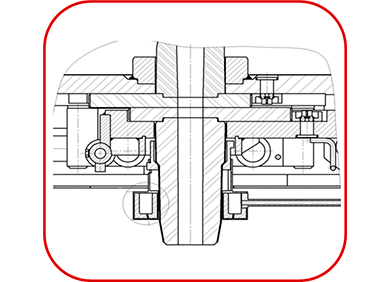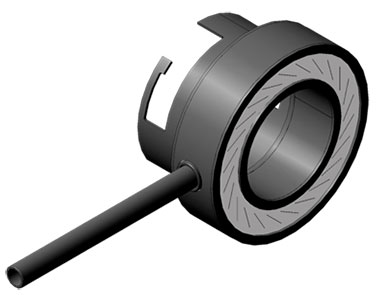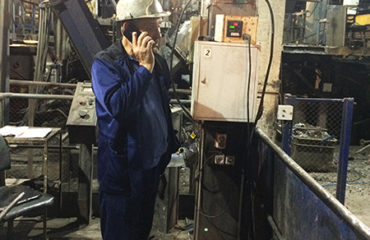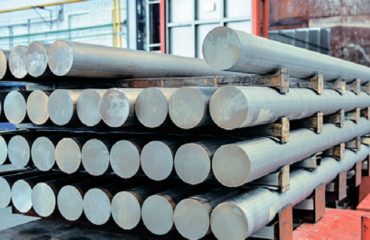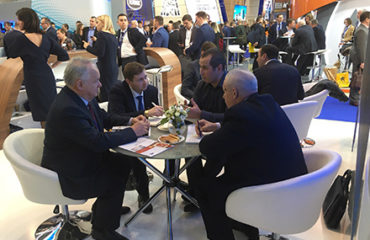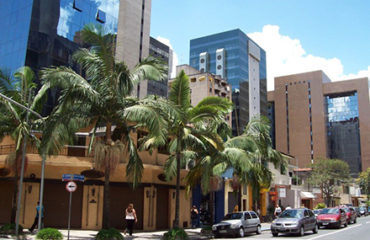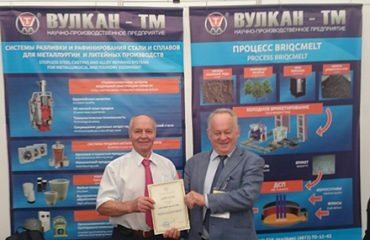Тechnology of metal secondary oxidation protection
Currently, the most common method of protecting metal from secondary oxidation is the use of a protective pipe made of refractory material, worn on the protruding end of the collector glass. In this case, the metal stream is located inside the protective pipe, without contact with air. The use of a protective pipe does not provide 100% protection of the jet against oxidation due to leaks in the junction of the collector cup and protective pipe. With this method of protection, protective pipes are used that are equipped with an argon supply system in the interface zone to prevent the penetration of oxygen into the protective pipe. Due to the inert properties of argon, it does not react with the chemical elements of the metal flow and thereby has no effect on the composition of the resulting metal. The combined use of a protective pipe and argon purge imposes significant restrictions on the maximum deviations of the geometric dimensions of the mating surfaces of refractories, which requires a toughening of their manufacturing technology and, in turn, affects the increase in the cost of collector glasses and protective pipes. The low accuracy of the landing dimensions of refractory products does not allow the effective use of protective pipes with argon feed. Another way to protect the metal from secondary oxidation is the joint use of a protective pipe and an elastic seal made of refractory material installed between the collector cup and the protective pipe.
Many manufacturers of refractories, both in Russia and abroad, produce elastic inserts of various compositions and differing mainly in the configuration of the installation ledges. The disadvantage of methods for protecting metal from secondary oxidation using protective tubes, as well as elastic inserts, is that they are disposable and require replacement after each melt. In foundries, as well as in metallurgy, where siphon casting takes place, the use of protective pipes is not possible. As an alternative to protecting a metal stream from secondary oxidation, NPP Vulkan-TM proposes to use a gas-dynamic metal protection device from secondary oxidation, which has wide technical capabilities, including that it is adapted for siphon casting of metal. The device under development for the gas-dynamic protection of the metal from secondary oxidation produced by NPP Vulkan-TM is mounted on a slide gate by snapping it onto a bayonet nut during inter-melting maintenance of a steel pouring ladle. Argon purging is carried out throughout the casting period. The resistance of the protection system is up to 7 heats. Depreciation of the system is caused by the accumulation of metal on the purge slots and cracking of the refractory ring. Due to the possibility of repeated use, gas-dynamic protection is a more profitable option compared to those discussed above. The share of costs per ton of cast steel compared with the use of protective pipes and elastic inserts is 30-40% less. In addition to the economic benefits, gas-dynamic protection against secondary oxidation for casting ingots from steel will reduce the cost of regrinding forgings by 1.25 times, reduce the remarks on ultrasonic inspection by 1.43 times, reject marriage by ultrasonic inspection by 2.3 times and defectiveness in class B/b 1.25 times.
Concerning the acquisition technology of metal secondary oxidation protection and receipt of detailed advice on product properties, delivery conditions and the conclusion of the contract, please contact the managers:
+74872701242
zakaz@vulkantm.com

